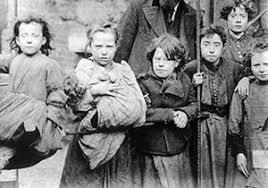On the 3rd September Oliver Cromwells New Model Army defeated the Royalist army at Worcester. The Kings ambitions to regain his kingdom were thwarted and he returned to his lodging in the city. As he was planning his escape a troop of Parliamentary horsemen arrived at the front door to arrest him, he just in the nick of time escaped with sixty of his officers through the back door. Thus begins the episode known as the escape of Charles II. With an award on his head of a thousand pounds Charles plunged into the countryside to escape. First he dismissed his companions hoping that with only a few companions he might have a better chance and then relying on a small clique of sympathetic gentlemen he attempted to escape into Wales. During this period he stayed at White Ladies Priory, Boscobel House and Moseley Hall. At Boscobel house the Kings hair was cut and he was disguised as a servant which involved teaching him the local accent and how to walk as a labourer. Whilst Parliamentary troops searched the nearby woodland the King and a companion hid in an oak tree, the companion being forced to pinch the king to keep him awake. After staying at Molesley Hall the King and his party moved on. At Bromsgrove his horse lost a shoe. At the Blacksmiths he got news of his army that had been beaten at Worcester. He added that King Charles should be hung for bringing the Scots into an English matter to which the smith agreed. At Stratford-upon-avon the King kept up his disguise as a servant by being put to work in the kitchen. When he proved inept at setting up the roasting jack the cook became suspicious. Charles explained that he was too poor to eat meat and had no experience with roasting jacks, and the disguise was maintained. The route into Wales proved too well guarded so he and his companions went south to the coast in search of a ship to France. It was decided that the king would be disguised as a merchant going to recover debts but the man organising the ship, Captain Limbry did not appear. He had been locked in his bedroom by his wife who was afraid for his safety. Still hoping to escape from the south coast the King rode to Bridport only to find it full of troops and an Ostler who recognised him. Cleverly the King convinced the man that they had both been servants together for a gentlemen of Exeter. Finally the king rode east to Shoreham where his friends organised transport on the coal ship Surprise. Again the King was recognised by the Landlord and by one of the conspirators. He had to pay £200 danger money and hope against hope that the Landlord would keep his tongue. The King set sail, again, in the nick of time, two hours later a troop of soldiers arrived with orders to arrest the King. Charles escape is one of the most exciting episodes of the English Civil Wars. It has been widely celebrated in books and in film.
What does Victorianism mean?
The Victorian era lasted from 1833 to 1902 and further, well into the years leading unto the First World War. Such a epic period of time, three lifetimes of men and women, is hard to define.
To start we need to do the definition. What do we mean by Victorian. Which of the three generations between 1833 and 1902 do we identify most as a typical Victorian? Is it the country squire, the colonial planter, the urban poor or the aristocracy? Only four stereotypes amongst the thousands who would clamour for our attention.
Is it a question of mental outlook? If so which of the philosophies do we choose? Do we pick the social darwinists, the anti-slavery evangelical, the cockney jingoist or the mid period skeptic of empire?
The Victorian era might be long and might have a number of sometimes contradictory. I actually argue that it defies effective categorisation but that does not stop me recognising it when I see it.

Following our recent article quoting Simon Jenkins, we received an interesting email from a representative of “These Fields Have Names”, a campaign group in Cornwall protesting the destruction of the countryside while building a nearly 8-mile-long new route for the A30 near Truro. They make some excellent points about ‘appreciation’ of a site not being […]
Is appreciation of our heritage sufficient to save it? — The Heritage Journal

Today we have the twelfth episode of Peter Walter’s series of lockdown walks “being a compendium of idle facts, hidden places and meaningless historiana gathered on walks within easy striding distance of the writer’s abode – and beyond”. Hedges and defensive fencing now hide some of the details, but the houses that look out over […]
Walking Backwards No 12. South Avenue to Stoke Green — Coventry Society News

Britain’s Chartist movement was one of those inspirational failures that people who try, against all the odds, to change the world love to talk about. They remind us not to count the game as lost until several generations after our deaths. At which point we can pretty well count on not knowing or caring who […]
A quick history of the Chartist movement — Notes from the U.K.

Having covered the history of cheese, it’s now time to turn to the glory that is cheesecake. This most fantabulous of unhealthy foods is a delight to behold. It has a cool and refreshing quality, whilst being as light as a feather. And it’s got cheese in it! Hurray! Thusly, let’s explore this cake that’s […]
The History of Cheesecake 🧀🍰 — Professional Moron

Welcome to Thursday Doors, a weekly feature allowing door lovers to come together to admire and share their favorite door photos from around the world. Feel free to join in on the fun by creating your own Thursday Doors post each week and then sharing your link in the comments below, anytime between 12:01 am Thursday […]
Roberta Writes – Thursday Doors: British Museum, these are a few of my favourite things #BritishMuseum #TreeofLife #RosettaStone #TheHolyThornReliquary —

“I was the conductor of the Underground Railroad for eight years, — I never ran my train off the track and I never lost a passenger… If you hear the dogs, keep going. If you see the torches in the woods, keep going. If there’s shouting after you… Don’t ever stop. Keep going. If you […]
The Underground Railroad & Harriet Tubman’s Fight To Free The Enslaved — THE CHRONICLES OF HISTORY

From Simon Jenkins, ex-Chairman of The National Trust: “Stonehenge is not like France’s Lascaux Caves, so fragile they have had to be closed in favour of a facsimile. What you see is what you get, robust stones requiring little upkeep. Indeed their thrill is as much the view from afar as from close to, and […]
The devastating words the pro-tunnel lobby can’t cover up — The Heritage Journal

Yinka Shonibare CBE On Sunday, older son and I had planned on traveling to Wheaton, IL to see some giant sculptures of fantastical creatures, but when each of us had nightmares the night before, we decided to postpone the trip. Instead we went to one of our favorite places to walk, Meijer Gardens and Sculpture […]
Artist Yinka Shonibare CBE at Meijer Gardens and Sculpture Park on 082322 — Tao Talk



